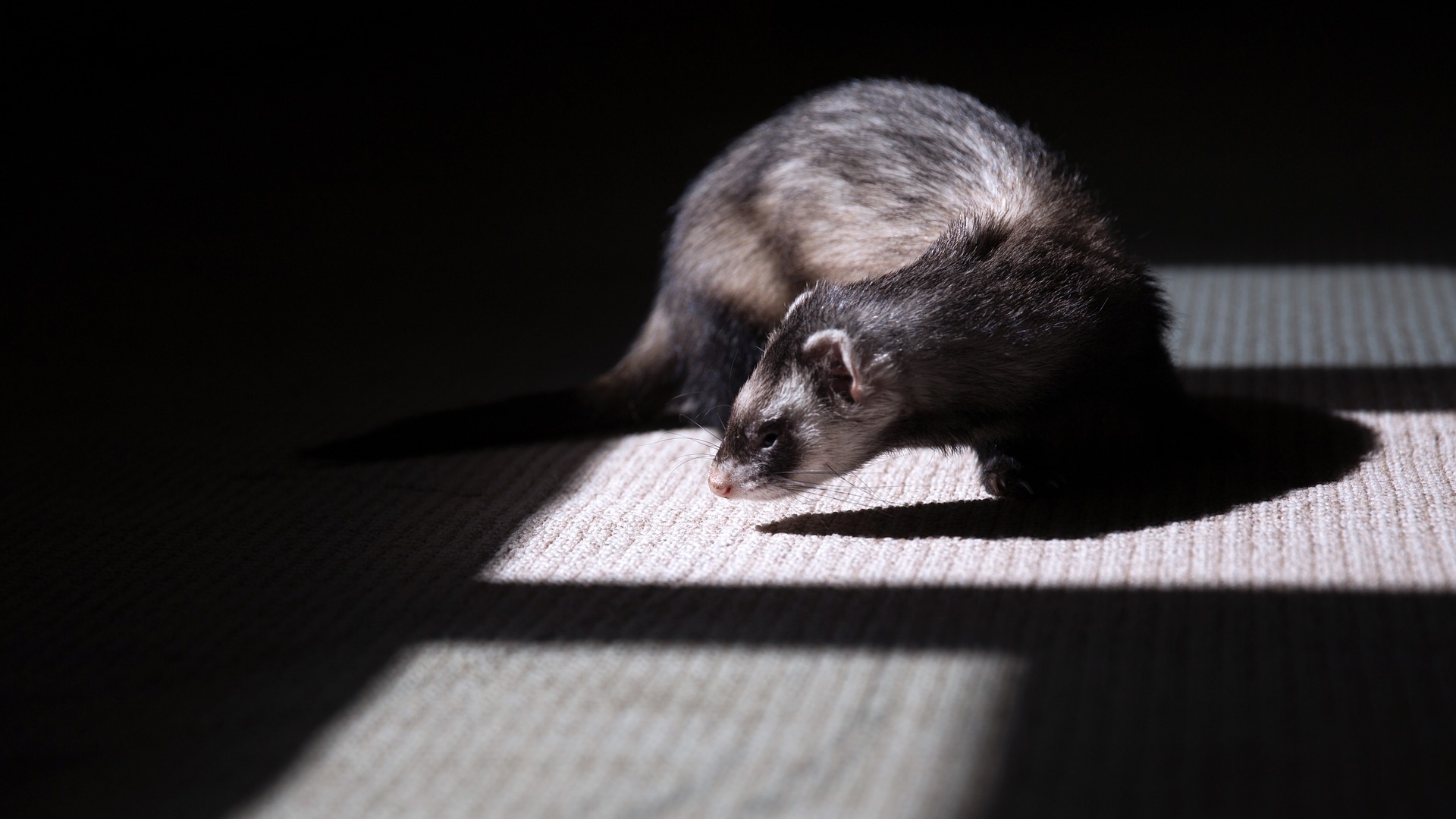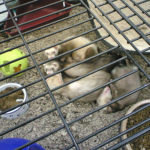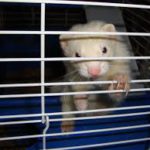As an Affiliate, I may earn from qualified purchases.
The following items are not a total solution, but they will help in the implementation of a program of cage enrichment. In addition to the ideas listed, pet product manufacturers make many ferret-specific toys, hammocks and other items to enrich your ferret’s life.
You can minimize any health risks with an easily implemented program of enrichment and exercise. Enrichment goals are to reduce a ferret’s boredom, to increase a ferret’s interest in its environment, and to encourage a ferret to exercise on a more regular basis.
Much of the time, however, a ferret leads a solitary, caged existence, such as when the owner is at work or sleeping. When enrichment is needed the most, those are the times. You can redesign your ferret cage to make it more “ferret friendly” by adding one or more of the ferret supplies discussed below.
Around the world the most common method of confining ferrets is by keeping them in a cage. There is little doubt that caging will continue to be popular in controlling and protecting ferrets, even though research has demonstrated extended caging can cause health problems– both mental and physical.
1. Cage Blanket
Every ferret cage needs a cage blanket, which is nothing more than a covering that conceals part or most of the interior. The best cage blankets are made like quilts, with an interior layer of washable water-resistant fabric (preferably dark), quilt batting for insulation in the middle and an outer layer of decorative fabric. The inner layer allows easier clean up of potty mistakes, the insulation layer helps absorb noise and the outer layer makes it look nice for the neighbors.
My cage blankets have a top that is custom-fitted to the cage, with back and side flaps that extend to the bottom of the cage; two flaps cover the front. When hanging down and fastened with Velcro, the flaps convert the cage to a quiet, dark and warm environment. It is very easy to lift the flaps up to watch the ferrets, or perhaps to allow light and air in the cage during playtime.
2. Nest Box
The fact that ferrets prefer to sleep in a nest is readily apparent to anyone who has had to drag a ferret from under a sofa or hutch, or search for a ferret inside dresser drawers. A nest box can be made from a cardboard box (just cut a hole in the end), or fashioned from wood or plastic.
3. Play Tubes
It doesn’t matter what they are made from– cloth, paper, plastic or metal– ferrets love tubes. In my ferrets’ cage, I replaced all ramps with tubes, which I prefer to trying to cover a ramp with carpet. I also have a large coiled tube in the bottom of the cage.
4. Exploration Tub
A plastic tub can be filled with leaves, paper balls, scented cloth, rattle balls, toys, or just about anything you can imagine. Even an empty tub becomes a place for wrestling and play.
5. Ceramic Water Bowl
Ferrets love water, and a ceramic bowl filled with water becomes a wonderful toy. Yes, water will get splashed, but that is what towels are for? Just smile and take pictures of the fun.
6. Small Fan
A small clip-on fan (battery-powered) can be quite helpful in reducing odor or circulating cooling air. I always clip one on when the room is warm, and occasionally I’ll mist some water through the air stream to cool the cage.
7. Chewing Objects
As with dogs, many ferrets love to chew, but allowing them to chew the cage, fabrics or toys can cause damage to the teeth. Supply your ferrets with appropriate chewing items, such as Super Fries, Ferret N-Bones, Cheweasels or other ferret-friendly chew toys.
8. Small Balls and Cubes
Ferrets love to manipulate small objects, and golf ball-sized balls are wonderful for this. Balls containing grit or other noisemakers are good, but be sure the ferret can not chew them open.
9. Crinkle Paper Tub
Fill a tub with crinkled paper, put some scent on a few of them, and you will have ferrets diving in for a better sniff. This is perhaps one of my ferret’s favorite enrichments.
10. Food Cube
A small box with some ferret paw-sized holes is a great enrichment. Just place some favorite treats inside the box, seal it up, toss it in the cage, and watch your ferrets work to get to the treat. Test the size of the holes to insure the ferret reach an arm in and still be able to pull out the treat.
When I do my daily cage cleaning, I pull out the old enrichments and replace them with the stuff I took out a week ago. To the ferrets, the replaced items are “new.”.
Bob Church is a former photojournalist and current zooarcheologist with degrees in biology (zoology) and anthropology (archaeology). He resides in Missouri with 19 ferrets that keep his chicken blender overheated and his heart overfull.
An enrichment program only works when it is being implemented, so do something each day. Your ferrets will thank you for it!
Every ferret cage needs a cage blanket, which is nothing more than a covering that conceals part or most of the interior. The fact that ferrets prefer to sleep in a nest is readily apparent to anyone who has had to drag a ferret from under a sofa or hutch, or search for a ferret inside dresser drawers. In my ferrets’ cage, I replaced all ramps with tubes, which I prefer to trying to cover a ramp with carpet. Just place some favorite treats inside the box, seal it up, toss it in the cage, and watch your ferrets work to get to the treat.
Don’t limit your cage enrichments to those I have mentioned. You know your ferret( s) better than I. Substitute something you know your ferrets would enjoy if you know your little fuzzies would not respond to the ceramic water dish.
You can redesign your ferret cage to make it more “ferret friendly” by adding one or more of the ferret supplies discussed below.
It is not necessary to have all the items in the cage at the same time, although the cage blanket and the nest box should always be a part of the cage furniture. From the viewpoint of enrichment, switching out items each day and replacing them with new enrichments has a much better impact on a ferret than if it had the same enrichments all the time. For ferrets, new is old and good is boring, so move stuff in and out as often as possible.










Comments are closed, but trackbacks and pingbacks are open.